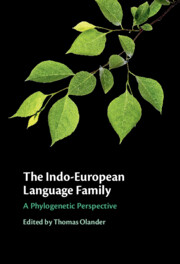
-
- You have access
- Open access
- Cited by 3
-
Cited byCrossref Citations
This Book has been cited by the following publications. This list is generated based on data provided by Crossref.
Canby, Marc E. Evans, Steven N. Ringe, Donald and Warnow, Tandy 2024. Addressing Polymorphism in Linguistic Phylogenetics. Transactions of the Philological Society, Vol. 122, Issue. 2, p. 191.
Stifter, David 2024. The rise of gemination in Celtic. Open Research Europe, Vol. 3, Issue. , p. 24.
Kassian, Alexei S. and Starostin, George 2025. Do ‘language trees with sampled ancestors’ really support a ‘hybrid model’ for the origin of Indo-European? Thoughts on the most recent attempt at yet another IE phylogeny. Humanities and Social Sciences Communications, Vol. 12, Issue. 1,
- Publisher:
- Cambridge University Press
- Online publication date:
- September 2022
- Print publication year:
- 2022
- Online ISBN:
- 9781108758666
- Creative Commons:
-
This content is Open Access and distributed under the terms of the Creative Commons Attribution licence CC-BY-NC-ND 4.0 https://creativecommons.org/creativelicenses


